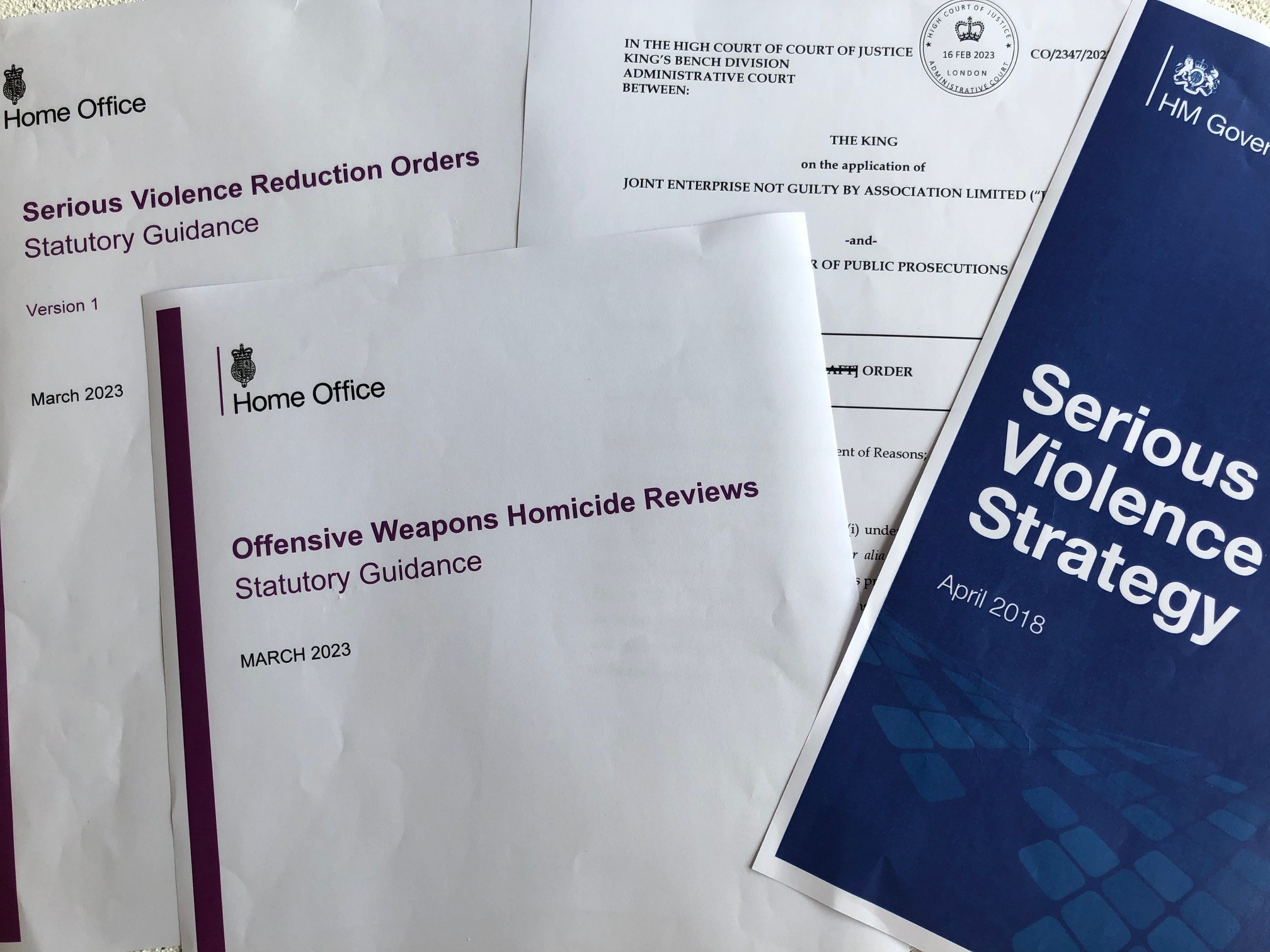
Few incidents necessitate as immediate and thorough an inquiry as homicide.
Reviewing such events is crucial to understanding the failures that led to the loss of life and to implementing measures that prevent future occurrences.
This last month we’ve seen MPs set up inquiries following the horrific murders in Stockport and in regards to grooming gangs. The importance of establishing what went wrong, amid the contested and highly politicised debate surrounding these events, emphasises the need for an authoritative source to understand what happened, and to assess how to better prevent such incidents in future.
This underscores the purpose of Offensive Weapons Homicide Reviews (OWHRs). Introduced in the Police, Crime, Sentencing and Courts Act 2022, OWHRs aim to help national and local agencies understand the causes of serious violence, to better prevent weapons-enabled homicide and ‘save lives’.
In a forthcoming report produced by the Centre for Crime and Justice Studies, Dr Susie Hulley and Dr Tara Young examine the potential benefits and risks of OWHRs, particularly to young adult safety. Young adults (18- to 25-year-olds) were identified as overlooked by existing homicide reviews, and as such were considered a priority for OWHRs.
Research from similar homicide inquiries, such as Domestic Homicide Reviews (DHRs), indicates that recommendations have often not been acted on, which raises concerns about the extent to which OWHR recommendations may be implemented. Additionally, the lack of a statutory duty to act on findings and, vitally, the absence of additional resources to implement recommendations are fundamental issues here.
Looking at evaluations of existing homicide reviews, Hulley and Young identify three other factors that may impede learning and change:
- The long length of reports, particularly for incidents involving individuals engaged with mental health services.
- The considerable lag between the homicide event and the publication of its review. This time lapse can affect engagement with the outcome, as people move positions and interest wanes over time.
- The absence of a central, national repository for homicide reviews has made it challenging to gather, collate, and analyse various inquiry recommendations to establish relevant trends and patterns across reviews. Additionally, the lack of coherent methodology and consistency between reviews can limit the comparability recommendations, in order for systemic learning to be achieved.
The repetition of homicide review recommendations across many years illustrates the lack of systemic learning. For instance, a 2023 Home Office report of Domestic Homicide Reviews found that five of the nine identified themes were consistent with the previous review of Domestic Homicide Reviews seven years earlier. Furthermore, the substantive content of the four new themes was all covered in this earlier review under different headings.
In addition to informing the development of a new and evolving policy – OWHRs are due to come back to parliament later this year – Hulley and Young also make a case for prioritising practices we already know work. They state ‘existing research has identified the factors that contribute to serious and offence-related violence involving 18- to 25-year-olds’. Such recognition has so far failed to translate into better services addressing young adults’ bespoke needs, according to recent critical evaluations.
While pockets of good practice exist, a recent Probation Inspectorate review of provision noted a lack of support and bespoke services for young adults leaving custody, and regarding knife and weapons interventions specifically. Likewise, the Home Office evaluation of Violence Reduction Units noted ‘VRUs were not sufficiently prioritising young adults and young people who are already entrenched in offending and violence.’
At best, the promise of OWHRs could help to address these gaps. At worst, they could be a further distraction.
To read the full list of possible benefits and risks of OWHRs, as well as recommendations, keep an eye out for the upcoming report ‘Learning from tragedy? The potential benefits, risks and limitations of Offensive Weapon Homicide Reviews’.
We are hosting a roundtable to discuss themes from the report with experts in safeguarding, review and young adult safety. To register an interest in this event please contact communications@crimeandjustice.org.uk
This report is part of the Young Adult Safety project at the Centre for Crime and Justice Studies and supported by the Transition to Adulthood (T2A) Alliance, a Barrow Cadbury Trust criminal justice programme and campaign.
